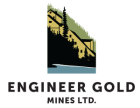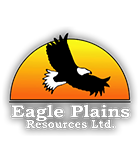Rated PG: “Project Generators” Are Exploration Speculations Fit For The Whole Family!
Jun 03
As per the business model, which is arguably the safest way to survive long-term in the mineral exploration industry, project generators (PGs) reduce their risk by enticing someone else to take a risk. After all the prospecting, staking, mapping, and sampling is done, each project/property of merit needs to be drilled. This is where the enticing part comes in! PGs must be capable of telling a story so great, a story in the form of a gazillion dollar geological question begging to be answered, that other players (larger explorers, miners, financiers, etc.) spend their own hard-earned money drilling.
Is there a mine’s worth of minerals down there?

That’s the gazillion dollar question we’re trying to answer, and drilling deep into the country rock helps answer it. Drilling is the most expensive part of the exploration process. All-in costs can easily run upward of $250 per meter, therefore it’s the most risky part of the business. Success can bring fortunes overnight. Failure often leads to bankruptcy and reverse splits (rollbacks). Shareholders can lose everything.
*Rate PGs based on their track record of generating partnerships and spinoffs (if no track record exists, are the people enticing?), not solely on the number of projects in their portfolio.
Other definitions for “project generators” exist, but that’s essentially the financial equation they all boil down to. PGs reduce their exploration risk (cost of drilling) in exchange for limiting the reward of a mineral discovery. Economic discoveries can be worth $100’s of millions, even billions, today.
Possibly gazillions in the future!
People who run PGs, alongside people who speculate on PGs, are choosing to hopefully own 5%, 10%, or 25% of something rather than 100% of nothing.
Therein lies the trade-off. And it’s a trade-off many speculators don’t want to make.

Here’s what some of the critics have been saying!
- Might have a tough time sitting through this one, folks, “PGs are boring”.
- “PGs are too complicated” – investors prefer a quick story that’s easy to understand.
- Too safe! The directors had a chance to take a risk, but didn’t. “Where’s the risque factor?”
How else to respond to the common criticisms of PGs, except to say family-friendly shows aren’t always the most entertaining. The gun slinging risque stuff comes with a parental advisory warning.
I agree with the critics!
But here’s the part they often leave out…
Boring and safe PGs, assuming they’ve maintained a solid share structure, are capable of becoming stories with glitz, glamor and sex appeal. Throughout history you can find many examples of PGs who struck it rich for themselves and shareholders, capturing the attention of people across the world in the process.
Arguably, critics are overly pessimistic when rating PGs.
The PGs listed below have a track record of spinoffs and enticing partners. Each has a drilling program and/or drilling programs underway, yet Mr. Market prices them (for now) at a serious discount to their real potential. That’s a mistake in judgement which has created a temporary miscalculation in price. Going forward, these stocks should be re-rated higher because arithmetically they’re actually more likely to participate in a mineral discovery (and we’re in a discovery-driven bull market).
Transition Metals (XTM, TSX-V)
Market Cap = $8.4 Million | Cash and Securities = Approx. $7.5 Million
XTM is a good recent example of a “boring PG” that’s become less boring in 2019. After years of plugging away (sifting through deals, prospecting, mapping, etc.), Transition Metals and CEO Scott McLean, who previously spent 23 years with Falconbridge, started getting some people’s attention January 14 upon announcing a hole from their reverse air blast (RAB) drilling program at the Highland Gold Project (Cape Breton, Nova Scotia) intersected 9.1 m grading 23.2 g/t Au.
XTM became even less boring again April 29, and gained the attention of even more people upon announcing drill results from Sunday Lake – 41.2 m grading 5.5 g/t PGM and 0.57% Cu.
Look how these announcements coincided with an increase in both price and volume.

This week we learned Rio Tinto (RIO, NYSE) has initiated a $3 million exploration program on Transition’s Janice Lake Project, which is prospective for sedimentary hosted Copper. That deal plus the one they’ve struck with North American Palladium (PDL, TSX), where Transition has a 25% carried interest to feasibility, arguably makes them a not-so-boring PG.
Additionally, McLean highlights the following 3 projects as an example of Transition’s “key properties” that haven’t been optioned by someone else.

Having met McLean at the Sprott Natural Resource Symposium several years ago and watching his presentations, I can tell you his personality type makes him vary capable of enticing partners. At least, he made Transition’s projects sound pretty exciting to me! So nice to see XTM gaining some traction in the market. The stock’s currently trading near the higher end of a 5-year range, bullish trading pattern underway.
Salazar Resources (SRL, TSX-V)
Market Cap = $21 Million | Cash = Approx. $5.8 Million
SRL is still a sleeper stock even though Ecuador is jumping with exploration activity!
The country’s a hot spot for discovery, yet speculators still perceive the place to be ice cold. Ecuador’s government officially reduced tax rates, making it one of the most attractive places to invest in South America. They essentially rolled out the red carpet, but speculators haven’t seemed to notice (or they just don’t care right now).
They will take notice though, and they’ll eventually start caring. I think they’ll even start cheering and touting Ecuador as THE PLACE to be before this discovery-driven bull market is over.
BullMarketRun.com has provided boots-on-ground coverage from Ecuador and consistently recommended Salazar Resources as the country’s premier PG. Being long SRL has been the right call, as it trades up near multi-year highs, but 9 out of 10 speculators haven’t heard Salazar’s story! When they do hear the story I think they’ll want in.

Don’t overthink SRL!
Follow the money!
Salazar’s Curipamba Project has been endorsed from the highest levels of business/political power in Ecuador (Consorcio Nobis and The Ponton Family) to the highest levels of finance in Vancouver (Wheaton Precious – WPM, TSX). Their involvement is a positive from every angle you want to look at! A huge POSITIVE, especially as it relates to securing the necessary funding and permitting to build a mine.
Salazar‘s 25% carried interest in the El Domo deposit and target-rich Curipamba Project has an implied value of $42.7 million, based on what Altius (ALS, TSX) paid for the 2% NSR.
If grade is king we can place a crown on Curipamba.

Adventus Mining (ADZN, TSX-V) is funding Curipamba and the El Domo deposit (an estimated 9 Mt grading 5.2% CuEq) to production in exchange for 75% ownership.
I maintain my belief that 2019 (and 2020?) will be the year of discovery for ADZN and SRL, thus attractive times to own the stocks. Adventus plans to drill at least 6,000 m outside of El Domo during H2. They’re also funding exploration programs at Santiago and Pijili, 2 projects originally identified by Fredy Salazar (who’s considered to be one of the best prospectors/geologists in Ecuador), whereby Adventus would carry Salazar to a construction decision in exchange for 80% ownership.
Simultaneously, Salazar will be using a portion of its $5.8 million working capital to self-fund exploration efforts on its 100%-owned Ruminahui and Macara projects.
Azimut Exploration (AZM, TSX-V)
Market Cap = $17 Million | Cash = Approx. $2.7 Million
Under Jean-Marc Lulin’s leadership, Azimut has emerged as one of the smartest ways to play technology within the mineral exploration sector. The company uses a proprietary pioneering approach to big data analytics (the “AZtechMine” expert system) enhanced by geological know-how. Evidence of the AZtechMine systems’ effectiveness displays itself via Azimut’s large land position in Quebec’s James Bay region (outlined in red below), Canada’s youngest emerging mining district.

Exploring James Bay is akin to exploring the Abitibi 100 years ago!
Many unknowns and gazillion dollar geological questions remain unanswered in James Bay. For instance, BHP Billiton recently invested $5.8 million to gain a toehold stake in PG Midland Exploration (MD, TSX). The mining giant is intrigued by a style of Copper mineralization (unlike anything BHP’s geologists have seen before) Midland has found on its Mythril Project.
BHP‘s investment and Midland’s grassroots drilling program at Mythril made AZM slightly less boring (Aziumut’s Pikwa Project is located adjacent). Notice how it climbed past 50 cents in April.

The stock has backed off since mid-April following less than thrilling initial results from Midland. This downdraft represents an attractive entry point for both AZM and MD as drilling ramps up again. A 5,000 m program started June 4, using 2 rigs.
Implementing the PG business model effectively, Azimut has managed to leverage its exploration dollars 6 to 1. To date, over more than a decade, Azimut‘s partners have spent $60 million versus its $10 million spent. Now that’s one way you leverage yourself in a discovery driven bull market!
Keep your eyes and ears open for news regarding Azimut’s Rex Trend in the months to come.

The Rex Trend is sitting in Azimut’s back pocket. It’s a card they haven’t really played, but will when the time’s right. Lake-bottom sediment anomalies can be a great indicator, and the Rex Trend anomaly is rather extraordinary! I’m convinced this project in itself could fetch a price tag of more than $17 million, Azimut’s current market cap.








